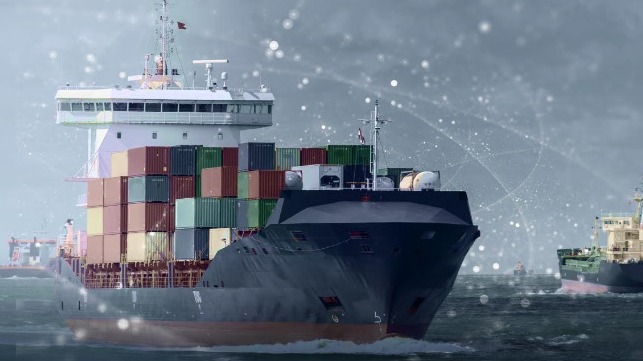Three Trends That are Improving Maritime Cost Savings

Industry experts agree that the maritime industry is rapidly leveraging data to optimize operations. Beyond AIS data, many maritime companies are combining different types of data to get a clearer picture of the maritime landscape. With profit margins running tight, data, and particularly combinations of different types of data, are allowing maritime professionals to make more accurate data driven decisions. Many are doing more with AIS data and are increasing their use of weather forecasts, particularly wind/wave forecasts. This combination of data sources provides greater accuracy which helps build confidence in relying on data to make data-driven decisions.
Another reason the maritime industry is having to play catch up with similar industries is the gap in technology and skills including costly implementation, time-consuming processes to visualize the data, and a negative experience with technical support resulting in an unruly amount of data.
Cost savings and resource efficiency are the driving forces behind many companies' move to data analytics and now with the option of more than one type of data available in easy to use APIs, the industry is transitioning to technology-driven solutions. It has taken a while for the maritime industry to adopt technology, but the shift toward big data and predictive analytics marks the new era in maritime.
Neural Networks Enable Quick Decisions
From ship owners to application service providers, the maritime industry is seeing a robust use of predictive analytics to streamline operations, select the most efficient routes, and avoid extreme weather. Additionally, trends including machine learning and building intelligent models, creating custom interfaces for specific industry purposes, tracking cargo, managing ports, and building navigation systems have all created interest in updating maritime operations.
Smarter navigation systems that leverage numerous weather variables and automate micro-adjustments for direction and wind are achievable today. Many professionals are ingesting some basic form of weather with their data models, however there is a lot of untapped potential for using advanced weather prediction variables, such as advanced wind and swell wave forecasts to build next-generation fuel consumption models.
Specialized wave forecasts can be put to work in a range of applications, from navigating more efficiently by minimizing transit time to improving fuel consumption simulation models. By integrating specialized maritime weather forecasts into digital twins you add a new layer of information to evaluate potential efficiencies. Studying ocean currents, wind and swell waves allows for a better evaluation of the best possible route for future voyages.
“If we only save 1% of fuel on every trip every day, we could significantly reduce our CO2 emissions’’ - Mike Pearmain, Chief Data Scientist, Oldendorff
Embracing APIs and Turnkey Solutions
Spire Maritime offers comprehensive data solutions that include weather predictions and AIS data in easy to use APIs. For applications, weather variables are often useless if not visualized as a layer, this can be costly and time consuming to build and develop into a UI from data files, using a turnkey solution like Web Map Service (WMS) to apply weather layers to a UI is a far more cost-effective way and time-efficient way of doing so. Different styles can combine key variables to get a clear picture of the weather on the UI.
Specialized Data for Vast Oceans
Specialized weather data is becoming essential to track and optimize global maritime activity. Wave variables, when combined with AIS data can be a game-changer for maritime operations. As maritime makes the shift to using multiple sources of data to drive decision making, providers too will shift to offer comprehensive data offerings. At Spire we already offer weather forecasting solutions and advanced maritime data.
The more data you can fuse and layer together from one provider and technology, the more accurate the solution is going to be. A missing data point, like a ship or an inaccurate forecast, can have a significant impact on cost.
Spire Maritime launched Dynamic AIS™ earlier this year. Dynamic AIS™ provides an unprecedented frequency of position updates in areas that are out of the reach of terrestrial collection and overwhelm other satellite AIS providers. More AIS messages, more unique MMSIs, and greater control of ship operations is the type of innovation the maritime industry needs. From mapping the most efficient routes for fuel economy to identifying trade patterns, ship operators are looking to fine-tune logistics and port arrivals to optimize revenue and operations.
One Thing Stays True
Beyond these three trends there is one trend that is the primary focus of most maritime operations: cost savings. Following IMO 2020 and in the post-COVID era, we are all focused on saving costs while continuing to drive the maritime industry forward. More data and reliable cost effective solutions are still needed.
This article is just an overview of how data analytics, especially advanced weather prediction can help reduce operational costs. We have taken a much deeper dive into how weather forecasts and wave data are key to advanced maritime intelligence, you can read it here.
I'd love to hear your thoughts on this article, and our team of representatives and engineers are always interested in learning more about current maritime trends and challenges. Feel free to contact me.
Iain Goodridge is the head of product marketing at Spire Global. He may be reached at [email protected].
The opinions expressed herein are the author's and not necessarily those of The Maritime Executive.
